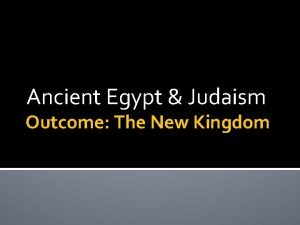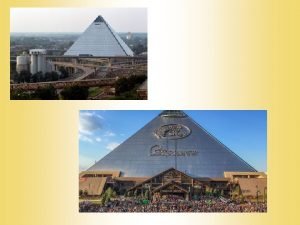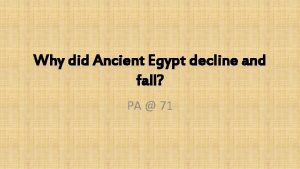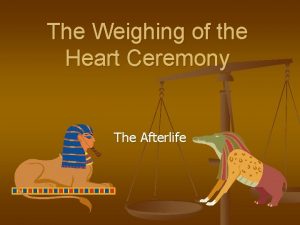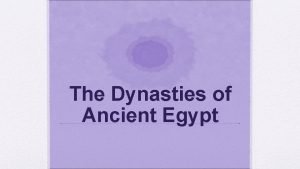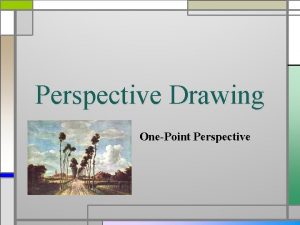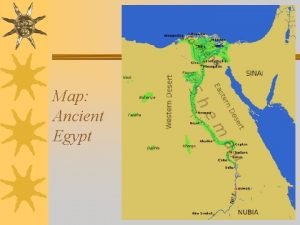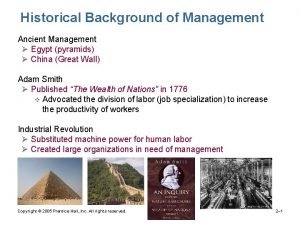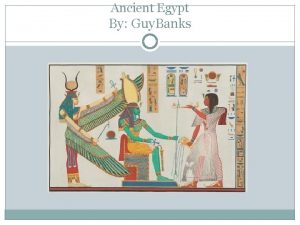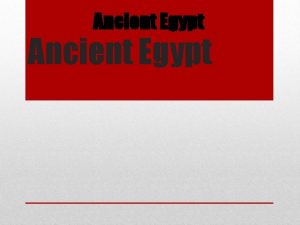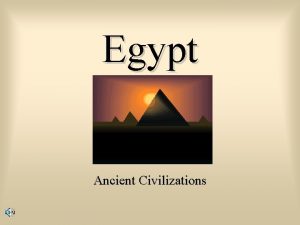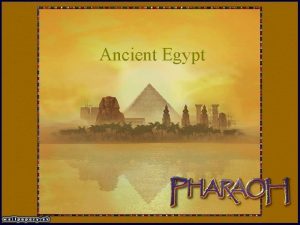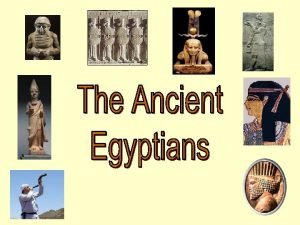Ancient Egypt The New Kingdom New Kingdom Overview















- Slides: 15

Ancient Egypt The New Kingdom

New Kingdom - Overview • civilization revolved around religion and its traditions • focused on burial practices and the after life • king or queen always promoted religion and would build temples to honour their culture and faith • Every element, every ceremony, had a religious aspect, and was given a religious figure to guide and watch over it

Religion • • Religion was primitive The Egyptians believed that those who created Earth, men, animals were the most significant gods Do you remember the creation story? Amon was the god of the kings Each being had a ka, ba, and akh The god Khnum created the child on a potter’s wheel and then put it in the mother’s womb, and also created the soul, which was the ka; this was placed in the heart, and left the body at the time of death The ba entered the body at birth, and left at death; this was the personality The akh was the form that the mummy took that could live in the after world

Religion • • Egyptian values and morals were order, justice and truth, called the Ma’at. They used these to achieve peace with the gods and to be allowed in the after world death was not a bad thing, but was looked at positively Afterlife was a place where the dead could participate in activities that had made them happy during their life on Earth to reach the after life, two things were necessary 1. items that were to be enjoyed in the after life by the ka had to be placed in the tomb 2. the preservation of the body, through the process of mummification

Religion - Mummification • The preservation of the body was the main focus of their religious beliefs, and took seventy days to complete

Religious Revolution • The religious revolution that occurred, with Akhenaton forcing everyone to pray to Aton was destroying Egypt, and ended when King Tut came into power and restored the worship of Amon, god of kings

New Kingdom – Science, Technology and the Arts • Hatshepsut’s ambitious building program including her own tomb at Deir al. Bahari and Great Temple of Karnak near Luxor

New Kingdom – Science, Technology and the Arts • Clay soldiers in a pharaoh’s tomb were used to protect him in the afterlife

New Kingdom – Science, Technology and the Arts • in Egyptian art, sculptures portraying love between a pharaoh and their lover are rarely seen • more often physical flaws are shown in these sculptures as representations of other “character flaws”

New Kingdom – Science, Technology and the Arts • Akhenaton created hymns to define his religion • some are found on the walls of the city he founded

New Kingdom – Science, Technology and the Arts • Coffins of pharaohs were crafted to express great wealth • in Tut's case, it is solid gold and shaped to represent his physical form without deformities

New Kingdom – Science, Technology and the Arts • Ramses II constructed the largest buildings and statues of all the pharaohs – 2 huge temples at Abu Simble

New Kingdom - Trade • Hatshepsut extended trade to the country of the Red Sea (Somalia) to obtain ebony, incense and ivory • In Egypt, labour was forced but this ended in 1889

New Kingdom – Specialization and Gender Roles • Most Egyptians lived in one story, mud homes; this include artists, traders, merchants and labourers • Women were basically treated well and were given a few legal rights that they enjoyed – They had the rights to dispose of land property and were able to divorce their husbands as well • Only four women were ever given the chance to rule Egypt, Hatshepsut being one of them • The man was the head of the household and was allowed to have as many wives as he wanted, though it was proved that one would be the best economically • The man passes on his inheritance to his children

New Kingdom - Impact • Temples which allow us to view the types of architecture and materials used for building in • the great tombs of all the pharaohs give us a glimpse of jewellery and wealth and are a great attraction for tourists
 Ancient egypt and judaism outcome the new kingdom
Ancient egypt and judaism outcome the new kingdom Old kingdom middle kingdom new kingdom
Old kingdom middle kingdom new kingdom Old kingdom middle kingdom new kingdom
Old kingdom middle kingdom new kingdom Youtube egypt
Youtube egypt Mentohotep
Mentohotep Upper egypt and lower egypt
Upper egypt and lower egypt Why did egypt decline
Why did egypt decline What was the weighing of the heart ceremony
What was the weighing of the heart ceremony Floral
Floral Ancient egypt vocabulary words
Ancient egypt vocabulary words Ancient egyptian frontalism
Ancient egyptian frontalism British council introductions
British council introductions Specialized jobs in ancient egypt
Specialized jobs in ancient egypt Ancient egypt
Ancient egypt Outline map of ancient egypt
Outline map of ancient egypt Contingency theory of leadership
Contingency theory of leadership
